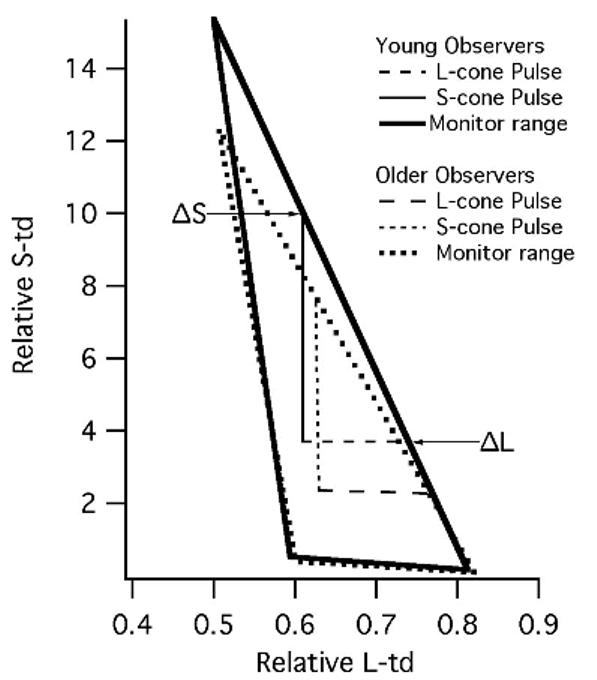FIGURE 1.

The relative S-cone and L-cone trolands of the S-cone and L-cone contrast stimuli at maximum contrast. All stimuli were delivered as pulses from equal-energy white. The triangles depict the maximum S-cone and L-cone trolands that can be produced by the monitor for the younger (solid line) and older observers (dotted line) with standard amounts of lens yellowing. The vertical lines depict the maximum possible modulation of the S-cone contrast stimuli from equal-energy white (intersection of lines labeled ΔS and ΔL), whereas the horizontal lines depict the maximum possible modulation of the L-cone contrast stimuli. For the standard younger observer, the ΔS and ΔL result in increased activation of only the S-(L + M) and L-M mechanisms, respectively (solid lines). For the standard 65-year-old lens, however, lens yellowing results in a small amount off-axis chromatic contrast that could lead to activation of the L-M mechanism by the ΔS cone contrast stimulus and to activation of the S-(L + M) mechanism by the ΔL cone contrast stimulus (dotted lines). See Table 1 and text for more discussion of this issue.
